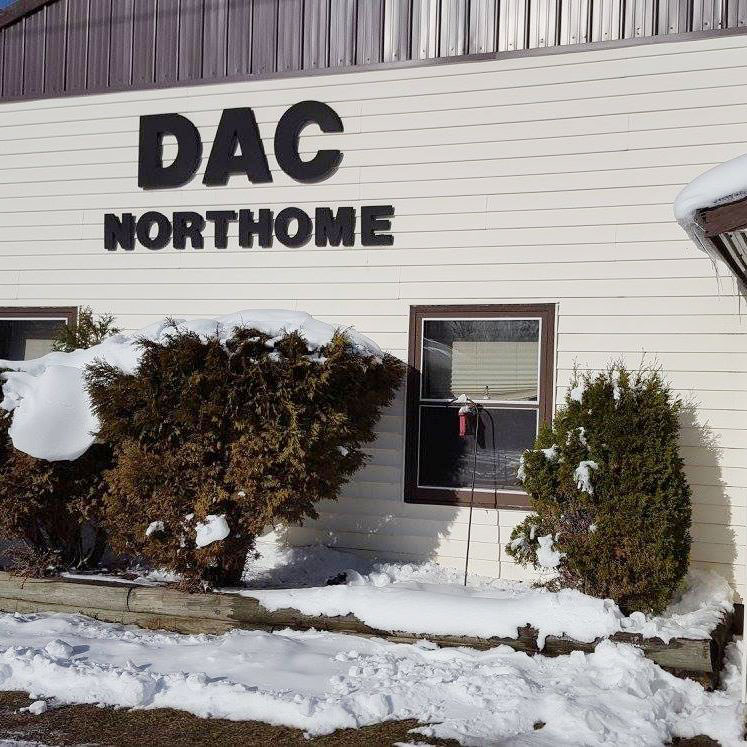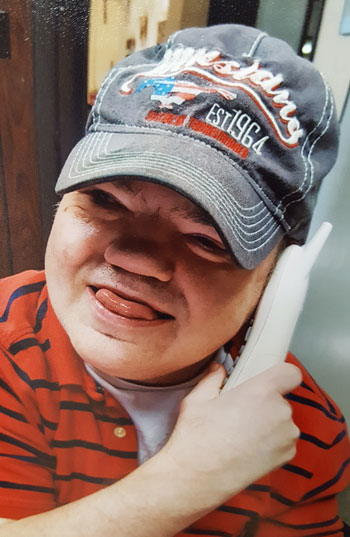Second smallest DAC works north-woods, fills needs
With a population of 200, Northome, Minnesota has a grocery store, a bank, gas station, post office, medical clinic, four restaurants and a day program serving 13 people with disabilities.
“Our youngest is right around 30, and our oldest is 89,” said Freya White, executive Director of Ita-Bel-Koo DAC, the second smallest MOHR member by 2015 program revenue.
“She (the 89-year-old) absolutely loves coming here. She waits at the door for the bus when it comes in the morning. She calls it ‘school.’”
Inside an old creamery building with uneven floors on Main Street, the DAC operates a custom woodworking shop. The nonprofit “spent ‘bocoo’ dollars” two years ago for an electric furnace, says White. “That really helped. If it can’t keep up, our old oil burner kicks in and blows soot everywhere.”
Big area in tree and lake country
The DAC’s formal name is a hyphenated combo of the three large northern counties it serves. Each is about the size of the entire Twin Cities seven-county metro area, 3,000 square miles. Trees and lakes are all around.
About half of the DAC participants live in town, while others travel up to an hour and a half one-way. Northome brands itself as “The heart of big bear country,” by the shore of Bartlett Lake and at the apex of three state highways.
The closest cities of significant size have some “big box” stores, but their populations together couldn’t come close to filling the Twins’ Target Field in Minneapolis. The largest are Bemidji (pop. 15,366), Grand Rapids (11,242) and International Falls (5,992). Bemidji is the closest, at 50 miles, while International Falls, the county seat, is about 70.
Itasca, Beltrami and Koochiching counties together have less than 3.5 percent of the population of the Twin Cities metro in an area that’s three times larger.
Timber, the trade of choice
This north-woods environment has made timber related products a staple for the DAC. Participants and staff make birdhouses, wooden chests, tables, bed frames and other made-to-order products. Peeling, sanding, constructing and painting are a few of the jobs.
The DAC has a contract with the county to take timber for its projects, which make up 80 to 90 percent of the nonprofit’s work, White explains. After birchwood stored outside started “walking away,” the DAC raised funds for a lockable shed.
One of its largest contracts is for birchwood name tags, up to 25,000 of them annually, for Concordia Village in Bemidji. They’re used for language camps. The DAC also makes fire starters.



Small staff is stable, but wages remain issue
In addition to White, the nonprofit has one full-time and four part-time staff members. Turnover has been low, but other employers in the community are offering higher wages, she said.
It serves people with brain injuries, physical disabilities and mental impairments. Everyone knows the DAC participants, said White, and makes a point of talking to them when they come in.
White said that the community is “totally behind them.” Most of the participants have been there for some time. They attend the churches, go to the stores and to the clinic.
“We don’t want to lose our DAC, for sure, because it’s such a big part of Northome,” said Susan Jankowsky, a house coordinator at Lutheran Social Services, which houses some of the DAC participants in Northome. Some of the residents have been there almost 20 years, and the work routine is important to them, Jankowsky said.
DAC hours are from 8:30 a.m. to 2:30 p.m. on weekdays. A bus operated by Arrowhead Transit picks up most of the participants.
“They love to go to work and have their friends,” said Jankowsky. “If they didn’t have the DAC, they would sit home, and their quality of life wouldn’t be as good.”
Speaking of churches, Ita-Bel-Koo traces its roots to a church basement in 1972. The town used to have a nursing home, which had a section for people with disabilities. It has since been torn down.
Growing up on an area farm, White worked at the local clinic for more than 20 years before landing at the DAC about five years ago. “I’ve spent most of my life here.”
Crews clean, but independent jobs scarce
While participants have few opportunities for competitive jobs in Northome, the DAC has work crews that clean a laundromat, community center, forestry building, fire hall and seniors building.
There’s life skills training about money management, tracking time and how to call 911.
White said her participants are like family. One returned home to the area and brings morning greetings of “Hi, sunshine,” or “Hi, beautiful.” Another comes into her office every day, and has formed a bond with her. This is a new behavior. “To see the changes in him is just amazing,” she said.
There’s onsite physical therapy and nebulizer treatments. Shredding work is available and a loom is used to make rugs. It’s a long building, with a room for exercises, a lunchroom and another room for storage. The group doesn’t go outside much in the warmer months due to the thick presence of bugs, White said.
Unlike some other areas, most of the people served live in foster or group home settings. Few family members live nearby.
‘Mayberry’ indeed, close knit family town
When asked if it’s like the city of Mayberry from the old Andy Griffith Show, White said it’s funny that people aren’t supposed to call each other names. “Up here, everybody’s family. It’s terms of endearment, basically.” One of the participants calls everyone “bohunk.” Participants take part in the community parade each year.
 An area that’s sparse in population is doubly sparse in day programs. The closest is MDI Hired Hands in Cohasset, 40 to 50 miles away.
An area that’s sparse in population is doubly sparse in day programs. The closest is MDI Hired Hands in Cohasset, 40 to 50 miles away.
It doesn’t take much to capture people’s attention in Northome. The streets and sidewalks are being replaced, so some trees had to come down in preparation. At lunchtime, participants gathered around a DAC window to watch some cutting, White said.
The seasons bring tourists, many from the Twin Cities. More than a handful are members of the local snowmobile club, which constructed a new building last year. White is past-president of the group.
Putting 1,000 miles or more on a snowmobile each season is pretty typical. “There’s nothing nicer than getting out in the middle of the woods,” she said.
Different environment, many issues the same
The DAC’s small-town environment shares educational challenges that are not all that different from larger providers. White said some have a preconceived idea that people with disabilities are born that way, which isn’t always the case.
Anyone can have a disability at any time. “You just don’t put yourself in that spot,” said White.
As to the debates at the Capitol, she said her organization’s views are shared there, but sometimes, people are not listening.
She said the paperwork requirements are getting ridiculous, enough to take away time she should be spending with participants. The director wears a lot of hats, from billing administrator, to human resources, marketing, grant writing, financial, job coaching, supervising and even maintenance. Staff are cross-trained and also cover many duties.
For industry insiders, most of the DAC’s participants are banded for funding. When banding ends some rates will go up and others will not. “To me, there should be an easier way to make stuff straight across the board,” said White.
The director is no stranger to the Twin Cities. She makes the four to five-hour trek each month to see her daughter, who lives in Minneapolis.